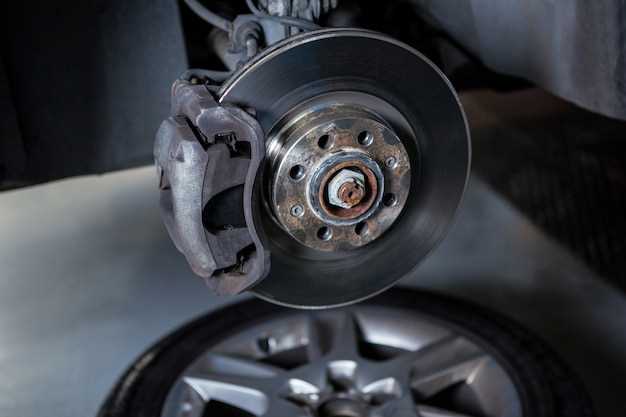Brake Maintenance Tips Every Driver Should Know

When it comes to vehicle safety, the braking system is one of the most critical components to consider. Proper brake maintenance not only ensures that your car stops effectively but also significantly reduces the risk of accidents on the road. Neglecting this vital system can lead to diminished performance and dangerous driving conditions.
Regular inspections and timely maintenance are essential in keeping your brakes in optimal condition. Over time, brake pads wear down, brake fluid can become contaminated, and other components may degrade. By familiarizing yourself with common signs of brake issues and understanding when to seek professional help, you can contribute to your overall road safety.
In this article, we will provide you with essential tips and guidelines for maintaining your brake system. From checking brake pads to monitoring brake fluid levels, our comprehensive guide will help ensure that your brakes function effectively, giving you peace of mind while driving. Remember, prioritizing brake maintenance is a crucial step towards enhancing your safety on the road.
Identifying Signs of Brake Wear and Tear

Recognizing the signs of brake wear and tear is crucial for maintaining vehicle safety. If you notice any changes in your braking performance, it is essential to address them promptly. One clear indicator is a squeaking or grinding noise when applying the brakes. This sound often signifies that the brake pads are worn and need replacement.
Another telltale sign is a vibration or pulsation in the brake pedal, which can indicate warped rotors. This can compromise stopping ability and should be inspected immediately. Additionally, if your vehicle pulls to one side while braking, it may point to uneven wear on your brake system. This could be caused by issues such as a sticking caliper or low brake fluid levels and should not be ignored.
Check for warning lights on your dashboard, as some vehicles are equipped with systems that alert drivers to brake issues. Lastly, a decrease in brake responsiveness or an increased distance required to stop indicates that your brakes may need attention. Regular checks and maintenance of your brake system are vital to ensure your safety on the road.
Step-by-Step Guide to Checking Brake Fluid Levels
Ensuring your brakes are functioning properly is crucial for safe driving. One of the key aspects of brake maintenance is checking the brake fluid levels. Follow these steps to perform this essential check.
First, park your vehicle on a level surface and turn off the engine. This ensures safety during the inspection process. Wait for the engine to cool down, as checking brake fluid in a hot engine compartment can be dangerous.
Next, locate the brake fluid reservoir. Typically, it is found near the back of the engine bay, close to the driver’s side. The reservoir is usually made of plastic, allowing you to see the fluid level through its side.
Once you have located the reservoir, inspect the current fluid level. The reservoir will have minimum and maximum level markings. Ensure that the brake fluid is between these two marks. If it is below the minimum mark, this could indicate a leak or worn-out brake components.
To check the fluid condition, look for any discoloration or particles in the fluid. Fresh brake fluid is usually clear or slightly yellow. If the fluid appears dark or contains debris, it may be time to replace it.
If you find that the brake fluid level is low, carefully remove the reservoir cap. Be cautious not to introduce any contaminants into the fluid. Add the appropriate brake fluid type as specified in your vehicle’s manual until it reaches the maximum mark. Ensure you use the correct type of brake fluid for your vehicle, as there are different formulations available.
After adding fluid, securely close the reservoir cap to prevent moisture contamination. Finally, check your brakes for any leaks and monitor fluid levels regularly to ensure safe driving.
When to Seek Professional Brake Inspection Services

Ensuring the safety of your vehicle is paramount, and the braking system plays a crucial role in this. Regular brake inspections are essential, but there are specific situations that warrant immediate attention from a professional. If you notice any unusual noises, such as squeaking or grinding when applying the brakes, it’s time to seek help. These sounds often indicate worn brake pads or other significant issues that could compromise safety.
Another critical sign is a vibration or pulsation felt in the brake pedal during braking. This can signal warped rotors or problems with the brake system’s alignment. Ignoring these symptoms could lead to decreased stopping power and increase the likelihood of an accident.
Additionally, if you experience a decrease in brake responsiveness, where the pedal feels spongy or sinks to the floor, professional inspection is necessary. This could indicate a fluid leak in the brake lines or air trapped in the brake system, both of which must be addressed promptly for your safety.
It’s equally vital to pay attention to warning lights on your dashboard. If you see the brake warning light illuminated, don’t delay in consulting a brake specialist. This alert typically signals a malfunction or a need for maintenance that could affect your vehicle’s braking performance.
Finally, if it has been an extended period since your last brake inspection or if your vehicle has experienced significant wear and tear, proactive professional assessment is crucial. Regular maintenance ensures that your brakes operate efficiently, providing you with peace of mind and safety on the road.

